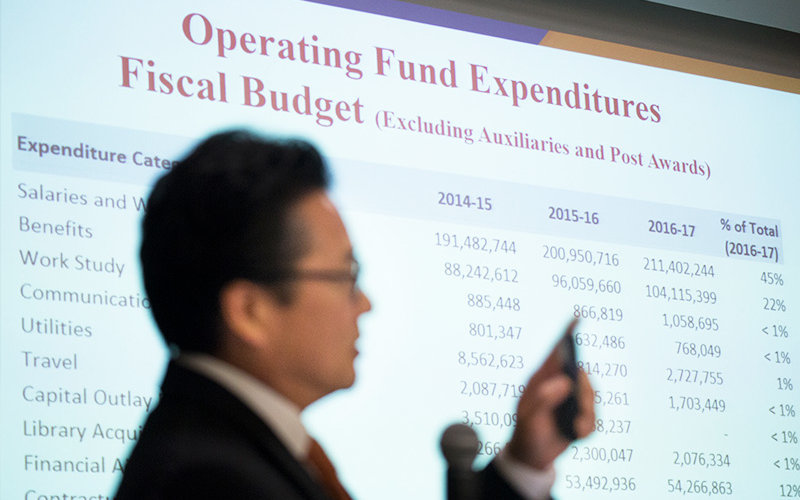
President Mildred García and Danny Kim, vice president for administration and finance/CFO, presented the Fiscal State of University presentation Nov. 2 before the University’s Academic Senate.
“Overall, our campus continues to remain fiscally strong,” announced García in her opening remarks in which she gave an overview of how much the state gave to the California State University system and from the tuition increase approved last spring. “The system received a combined total of $314 million for 2017-18.
“Most of this amount was designated for specific purposes, including mandatory cost increases, state university grants, and of course, Graduation Initiative 2025, which left only a portion for other general purposes.
“What does that mean for us?” García continued. “From our share of allocations – which totaled $22 million in baseline funds, we had to fund our own cost increase and other designated budget items, such as the GI 2025 and faculty positions. What remained after these costs was a mere $700K for undesignated purposes — a woefully low amount relative to our more than $400 million operating budget.”
Considering the state budget, Kim reported that the largest allocation goes for salaries and benefits — 65-67 percent of the total. The largest division allocation — 71 percent — goes to Academic Affairs.
Kim also noted the changes in funding over the last 20 years, shifting from a majority of funding from the state to student tuition and fees. This year’s budget is 44 percent from the state and 56 percent from tuition and fees.
Critical matters, Kim said, include the “continuing escalation” of university contributions to retirement and health/welfare for faculty and staff members. To showcase that, he pointed to retirement contributions that amounted to 25.8 million in 2011: today it is $48 million.
Another issue was deferred maintenance, which he estimated was at about $300 million. Asked about a plan to deal with the issue, Kim said there was no solution, but because it is an issue throughout the CSU, the university system may ask the state for one-time funds to help manage the situation.
Twice a year, García and Kim discuss the campus budget to the Academic Senate. In the fall, the presentation covers the budget and its allocations; and in the spring, where the budget stands.